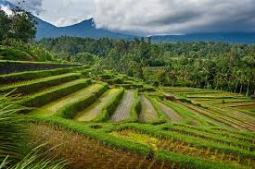An experiment was conducted in a room during summer at the Institute of Agriculture and Animal Science, paklihawa, with an objective of finding an appropriate substrate composition for profitable cultivation of oyster mushroom (Pleurotus sajor-caju). There were four substrates (leaves only, straw +saw dust, leaves+straw, leaves +straw+saw dust). The experiment was conducted in summer season. Total Yield obtained from different substrates were 400 gm, 600gm, 1150gm and 1200gm from leaves only, leaf+straw, saw dust+straw and saw dust+straw+leaves respectively. Thus the highest yield was obtained from sawdust +straw and leaves followed by saw dust +straw. Despite having good nutrients value, Pleurotus sajor-caju is quite resistant to heat and could be grown round the year also so was selected for the cultivation practice. Continue reading
Poultry in Nepal: Present Scenario, Indigenous Breeds and Traits of Economic Importance
Introduction
Livestock, including poultry is an integral part of the agricultural part of the agricultural production system in Nepal, providing draft power, manure and high value animal protein such as meat, milk and eggs for the human consumption that accounts for approximately 32% of agricultural GDP. Numerous people are involved in the production, slaughtering, processing, and trading of livestock and livestock products. Over 2 million households own cattle, and over 1.4 million households raise chickens.
Poultry farming is the practice of raising poultry, such as chickens, turkeys, ducks, and geese, as a subcategory of animal husbandry, for the purpose of farming meat or eggs for food. More than 50 billion chickens are reared annually as a source of food, for both their meat and their eggs. Chickens farmed for meat are called broilers, whilst those farmed for eggs are called egg laying hens. After 12 months, the hen’s productivity will…
View original post 5,354 more words
Mountain Agriculture Development
Mountain Agriculture Development
Livelihood of majority of the mountain people in the world especially Hindukush Himalayan region countries (Nepal, Bangladesh, Bhutan, Pakistan, India, china, Afghanistan) revolve around agriculture. Agriculture is a main source of economy for their livelihood. The problem of shrinking agricultural land is getting compounded in new human settlements, urbanization industrialization and other infrastructure development. Management of marginal land is getting increasing priority with the increasing population pressure, poverty, soil erosion, and degradation and loss of natural resource in the hill and mountains for economy growth and environmental protection.
Fig: mountain agriculture adaptation
The most logical steps towards improving the economic level of mountain people is Continue reading
sustainable development and agriculture
Sustainable Development and Agriculture
Sustainable development has been defined in many ways, but the most frequently quoted definition is from Our Common Future, also known as the Brundtland Report Continue reading

